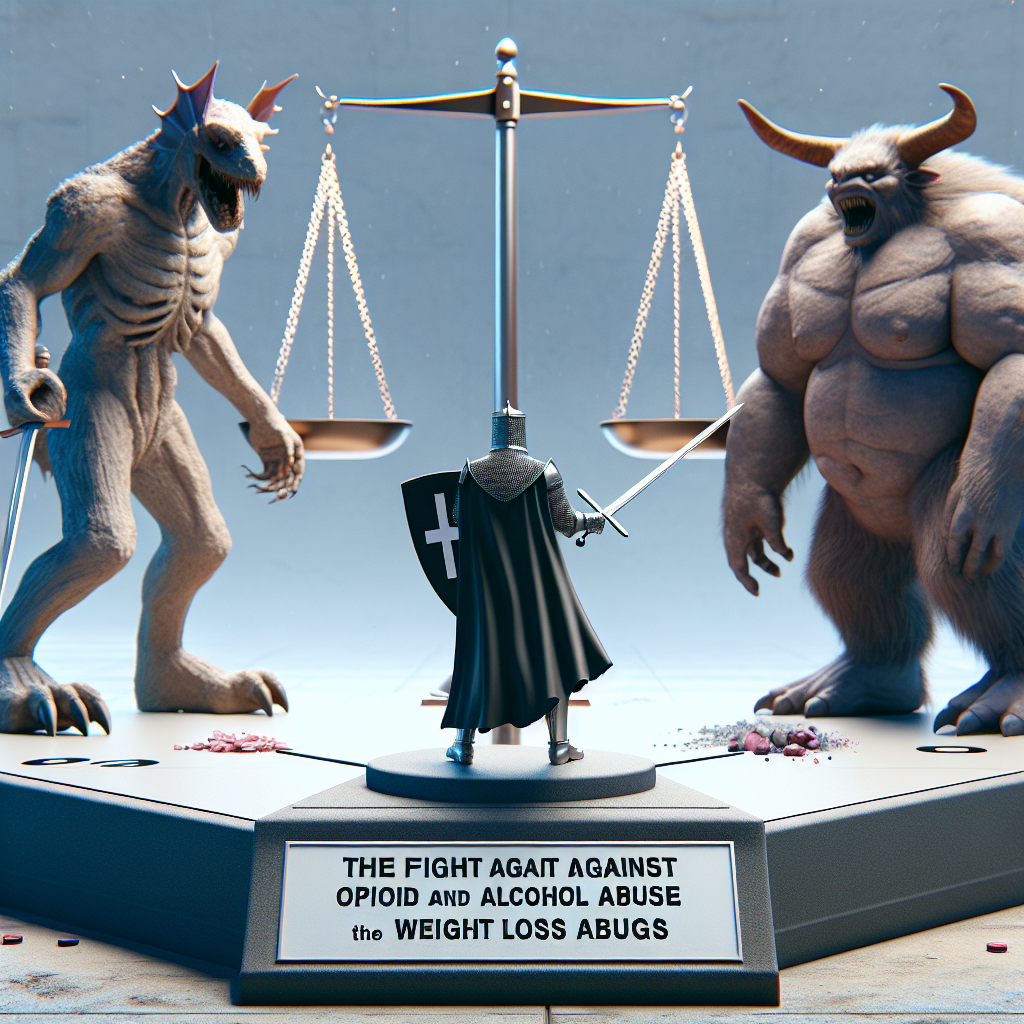Weight-Loss Drugs Show Promising Results in Reducing Opioid and Alcohol Abuse
Recent research published in the scientific journal Addiction highlights a groundbreaking development in the fields of addiction treatment and weight management. The study, which analyzed data from over 500,000 patients with a history of drug abuse, found that weight-loss medications, particularly GLP-1 drugs like Novo Nordisk’s Ozempic and Wegovy, as well as Eli Lilly’s Mounjaro, resulted in significant reductions in opioid use disorder (OUD) and alcohol use disorder (AUD). Specifically, these drugs led to a remarkable 40% decrease in rates of OUD and a staggering 50% decrease in rates of AUD among patients.
The Mechanism Behind GLP-1 and GIP Drugs
GLP-1 (glucagon-like peptide-1) drugs mimic a gut hormone that plays essential roles in regulating blood sugar levels and curbing appetite. Mounjaro goes a step further by also affecting another hormone known as GIP (gastric inhibitory peptide). Both classes of drugs have received approvals in the U.S. and Europe for managing diabetes and obesity and have gained immense popularity—leading to unprecedented demand and consequent shortages.
The positive correlation between prescriptions of these medications and reduced rates of substance abuse suggests potential for GLP-1 and GIP drugs not just in metabolic disorders, but also as part of innovative strategies for tackling the ongoing opioid and alcohol crises. The study’s authors noted that the protective effects were consistent across various subgroups, including patients with comorbidities such as Type 2 diabetes and obesity, advocating for broadening access to these treatments.
The Growing Substance Abuse Crisis
Substance abuse continues to pose a severe public health challenge in the U.S., with drug overdose deaths soaring to 107,000 in 2021—six times the number recorded in 1999. The opioid epidemic remains particularly devastating; over 75% of these fatalities involved opioids, a crisis exacerbated since the introduction of OxyContin by Purdue Pharma in 1996. As rates of substance use disorders persist, the call for effective treatment options becomes increasingly urgent.
Expanding the Therapeutic Potential of GLP-1 Drugs
GLP-1 drugs have already demonstrated success in treating various conditions beyond obesity and diabetes. For instance, Liraglutide, another GLP-1 medication developed by Novo Nordisk, has shown promise in potentially reducing cognitive decline in patients with mild Alzheimer’s disease by 18% after one year of treatment compared to placebo, as presented at the Alzheimer’s Association International Conference.
Moreover, Eli Lilly has ongoing research on their weight-loss injection, Zepbound, which has revealed promising results in late-stage trials—reportedly reducing the severity of obstructive sleep apnea in adults with obesity by up to two-thirds. Research into other indications is also underway, including conditions such as fatty liver disease, kidney disease, and cardiovascular diseases.
Market Performance and Investor Implications
Investors have reacted positively to these developments, with shares of Novo Nordisk (NVO) up by 0.6% on one recent trading day, bringing year-to-date gains to approximately 16%. Similarly, Eli Lilly (LLY) also recorded a 0.6% increase, showcasing an impressive 58% uptick for the year. This performance stands favorably against the S&P 500, which has appreciated by 22% within the same timeframe.
The medical and investment communities should keep a close eye on the continuing research around GLP-1 and GIP drugs, especially their applications beyond weight loss and diabetes. Given their emerging role as potential treatments for substance use disorders, these medications could not only provide improved health outcomes for patients but also represent significant growth opportunities for the companies involved.
Conclusion
In summary, the recent findings concerning weight-loss drugs and their links to reduced opioid and alcohol abuse mark an important development in the pharmaceutical landscape. The dual role these medications may play in combating two major public health crises presents a compelling case for ongoing investment in this sector. As further clinical trials are completed and additional data is published, both Novo Nordisk and Eli Lilly stand to benefit significantly, positioning themselves as leaders not just in the treatment of obesity and diabetes but potentially in addressing addiction as well.
Investors looking for growth opportunities should consider these trends carefully as the pharma landscape continues to evolve, potentially offering both fiscal rewards and substantial societal benefits.
















